How to Upload Paper Drawings Into Solid Works
How To Trace An Image In SolidWorks
![]()
Virtually Solidworks
Solidworks is a 2D and 3D capable CAD programme that almost designers and engineers will exist at least familiar with. It'due south a household proper noun in 3D modeling technology and its master marketplace is the manufacturing and mechanical design niche. Information technology as well has a lot of users in the construction and design industry.
The main appeal for Solidworks is its top-down blueprint arroyo when it comes to CAD work and 3D modeling. The user typically starts with a second sketch oriented on a airplane of their choosing. This sketch is made up of lines, splines, points, arcs, and other parametric geometric objects. Values that decide their various attributes such as length, radii, and tangency in relation to other objects bulldoze the appearance of the geometry.
On importing images
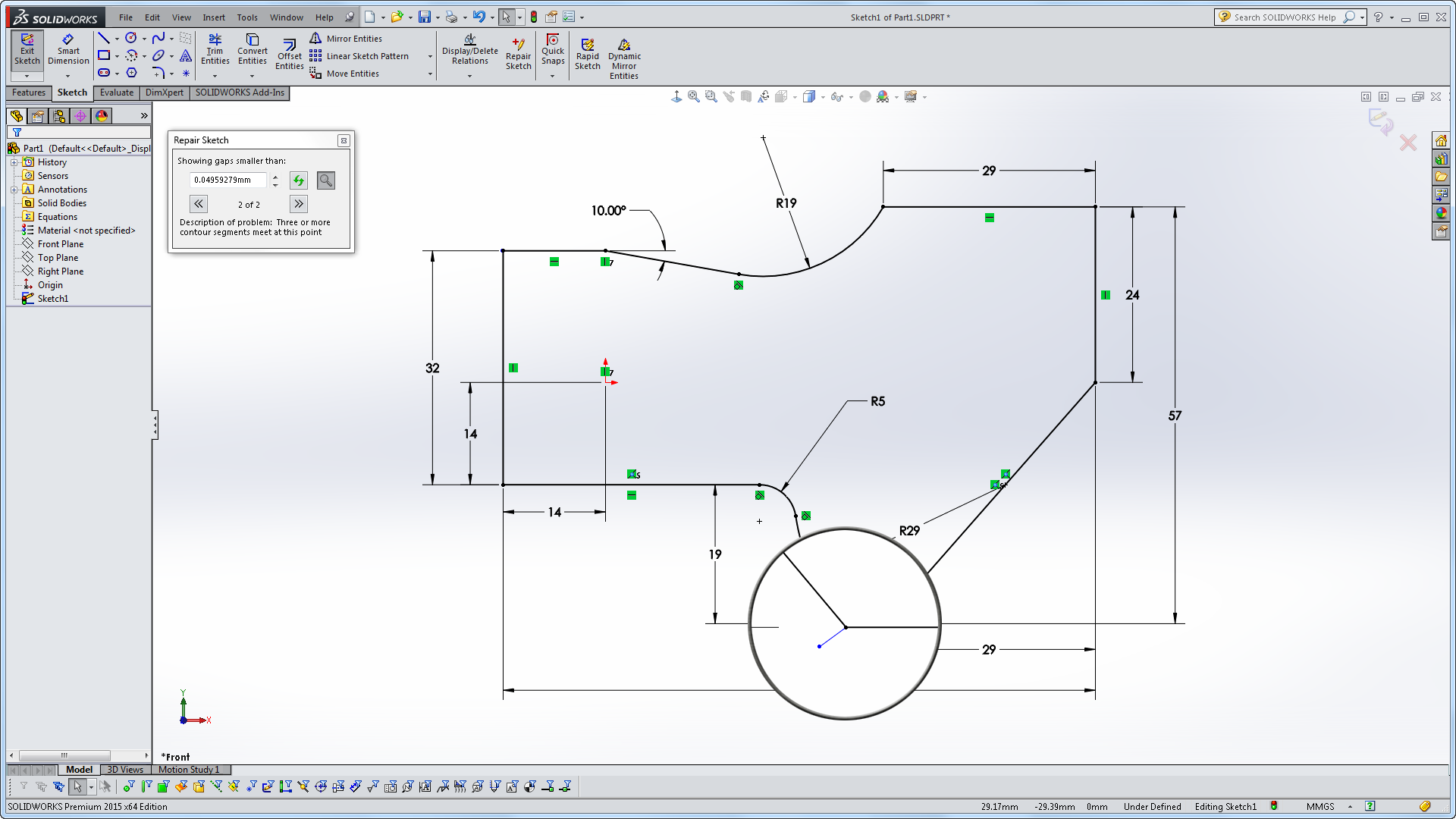
The Solidworks interface.Source
With the top-downwards workflow incorporated into Solidworks, users volition inevitably find themselves having to import 2D plans or sketches into the program to be used as references. Sometimes these reference images will be scanned copies of floor plans and details or manus-drawn sketches of details. At that place could fifty-fifty exist actual scans or photos of patterns or gaskets that need to exist imported into the program for CNC work.
With whatsoever imported prototype, the virtually important factor is the clarity of the paradigm and the accuracy of the measurements too as the dimensions, seeing as the terminate goal of a lot of these processes are workable 3D models that will sometimes be used to prototype certain auto parts using 3D printers or CNC machines.
There's a straightforward way of importing your image into Solidworks, and that'due south through the Sketch function. Just import your image file, a step that should exist a breeze if your image file is in a format that Solidworks supports, and trace over the image.
For simpler images, Solidworks has an automatic tracing tool that should generate sketch lines that go over the outlines of the paradigm. But this simply usually works for images with solid edges and outlines. Automatic tracing would exist harder to do for, say, full-blown technical images or concrete photographs of objects.
Luckily, y'all can use all the sketch tools in the program to just trace over the imported image manually. For simpler geometry, this would be easy, just some challenges might arise when yous're working with car-accurate objects or anything that has very little room for error.
Even though Solidworks' own automated tracing tool might non exist able to handle them, there is third-party software, such as Scan2CAD, that can manage the raster-to-vector conversion process earlier importing the prototype into Solidworks. That way, you'll be dealing with an imported and editable vector file rather than a raster paradigm which you still take to trace over. This is recommended for more complicated images or if manually tracing over seems besides tedious of a job.
We'll be going over all of these methods in this article.
-
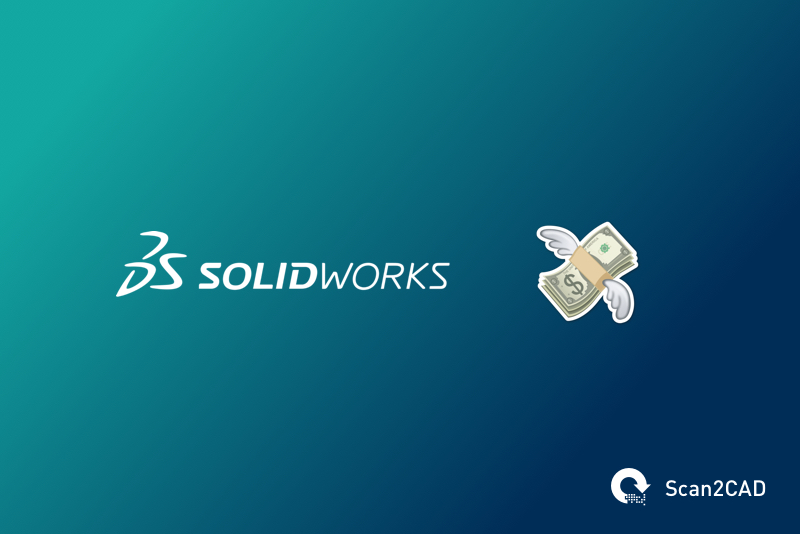
-
YOU MIGHT Likewise LIKE:
How Much Does Solidworks Cost? Pricing Explained
Raster and Vector images
Let's try to encompass the basics of these terms and file types first before diving into particulars. Raster and vector images are what nosotros'll be working with when trying to trace an image on Solidworks. Those are the two principal categories of images that we want to discuss.
Raster images – too chosen bitmap images – are made upward of colored pixels amassed together to class images. The typical image files nosotros deal with such as JPG, GIF, and PNG are all examples of raster images. The clarity and quality of these images depend on their resolution. Simply put, the larger the file and the more colored pixels or dots per inch of the drawing, the better the quality. Ideally, we desire loftier-quality images for Solidworks. Blurry, pixelated copies will nevertheless piece of work, but, equally we mentioned earlier, accuracy is important when doing this and that but isn't guaranteed with low-quality images.
Vector images, on the other hand, are more often than not easier to work with on Solidworks since they're fully editable by the software. In fact, some output files made by Solidworks and virtually other CAD software are considered vector files. Their primary departure betwixt raster files is that instead of beingness fabricated of pixels, they're made of formulas and instructions detailing the look and size of specific geometric elements.
If it's still a bit confusing, imagine a picture of a black line. If this were a raster image, the file would be made upwards of black pixels clustered together to form the look of a blackness line. If this were a vector image, the file would exist made up of instructions on the color of the line, the thickness and length of information technology, and its orientation or angle.
And then when it comes to dealing with raster and vector images, we prefer working with vector ones for most CAD programs.
File formats for Solidworks
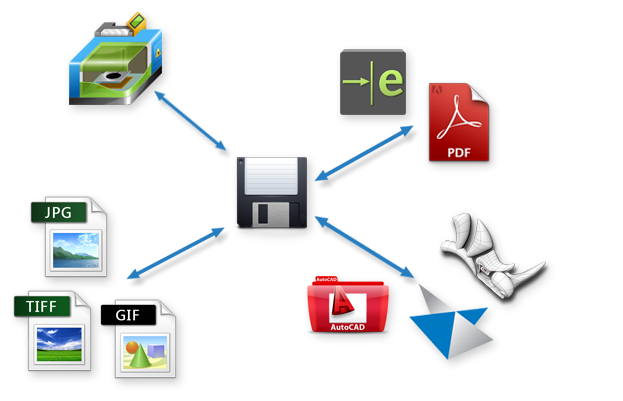
Solidworks file-formats.Source
Next, allow's move on to discussing what kind of epitome files and formats can actually be imported into Solidworks. It'south a pretty extensive list that covers the more common file types.
| For Import | |
| Sketch Picture |
|
| 2d Paths |
|
| 3D Mesh |
|
| 3D Solids |
|
| CAD and Vector |
|
| Special Files |
|
-
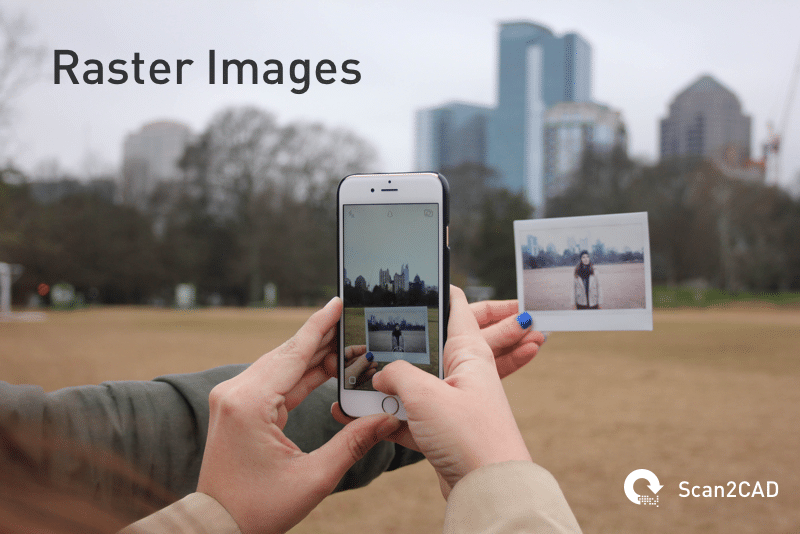
-
You lot MIGHT ALSO LIKE:
Raster Files — 7 Things You Need to Know
Tracing using Solidworks tools
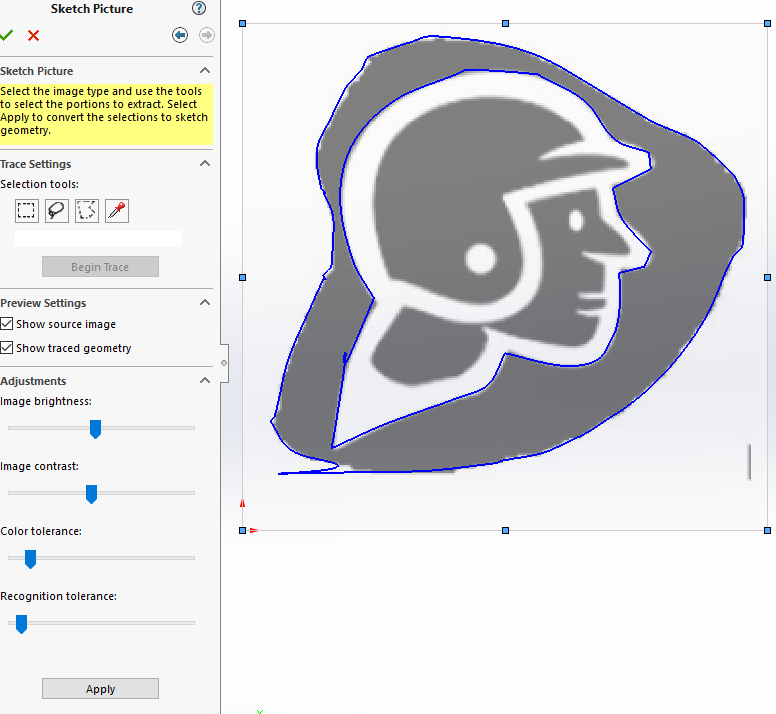
Solidworks car-trace function.Source
Uploading your raster image or photo onto Solidworks is a unproblematic enough process. Although at the stop of it, you'll have to make up one's mind if you lot want to trace over the epitome manually or if you want to use the auto-trace add-in to do the tracing for you lot. We'll go over into it in more item later on.
- The first thing we desire to practice is figure out the plane on which nosotros'll be inserting the image. Yous'll want to pick the Top aeroplane if you're working with a plan cartoon, the Right plane if you're working with a side particular, and the Front plane if it'due south a front-facing detail.
- In one case you click on the plane you want to work on at the left side of the interface, create a sketch. Once y'all've started the sketch, click on the Tools drop-down carte du jour and choose Sketch Tools. From there just click on Sketch Picture.
- Here's where you pick out your picture. Before we go on, let'due south go through some photo quality basics.
If yous're converting an epitome of a physical object it's important that y'all acquire a suitable image in the showtime instance. Here are some primal tips:
– Take a photograph of the object on a contrasting groundwork.
– Ensure the photographic camera is perfectly parallel to the object. You lot can achieve this by taking a picture from afar with a zoomed-in lens.
– Ensure in that location is appropriate lighting so there are no shadows or shades. Excessive shadows sometimes brand it harder to figure out where the edge of the object is.
– Take a loftier-resolution photograph in a lossless format. Become for TIFF or RAW since JPG is notorious for compression.
Ideally, nosotros would recommend scanning the object using a flat-bed scanner (the same used for paper) for the all-time results.
- Resize the image equally yous see fit. Showtime, try to go it to fit into the piece of work area, and so calibration up or down equally you need. Later on, you can endeavour to refine the calibration by finding a part of the drawing whose measurement you have verified. Then yous can sketch a measured line with a similar dimension somewhere to use every bit a reference. Then all that'southward left is to try and manually scale the image using the line you sketched.
- Now comes the actual tracing of the object. You can choose to do information technology manually using the Sketch drawing tools that Solidworks has, simply you could besides try to employ the Auto-trace add together-on part.
Using Scan2CAD
Manual tracing on Solidworks is not bad for simple images, merely it gets more difficult for larger or more complex drawings. Additionally, the auto-trace function in Solidworks won't always work with certain images. So this is when conversion software like Scan2CAD comes in handy.
Let's go through the step-by-step process of converting raster images to vector files using Scan2CAD and opening them upwardly on Solidworks.
- Open up the raster file you need to convert on Scan2CAD.
- Nosotros have tons of tutorial videos to help you lot out with the actual procedure, just the gist of it is to clean up the epitome first, turn it monochrome, and then go on with the actual conversion. All of this can exist washed in Scan2CAD and has a much more dynamic and customizable user experience than any auto-trace functionality.
- Importing the resulting vector file is merely a thing of opening up the file on Solidworks. There are a bunch of options you have to configure when opening up DWG or DXF files, merely most of these have to do with layers and visibility which we don't have to worry about since the file was converted by Scan2CAD. Then just go ahead and open upward the file.
Source: https://www.scan2cad.com/blog/cad/trace-image-solidworks/
0 Response to "How to Upload Paper Drawings Into Solid Works"
Post a Comment